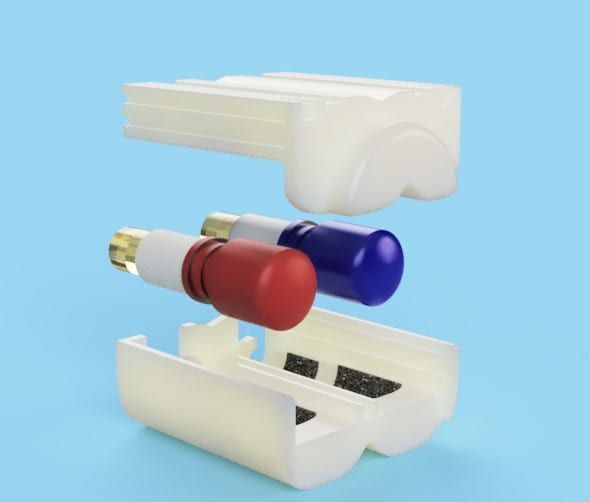Cathshield
A solution to prevent bloodstream infections and complications caused by hemodialysis catheters.
Project Description:
Central-line associated bloodstream infections (CLABSIs) affect nearly 100,000 dialysis patients every year, costing patients and hospitals billions of dollars in infection-related care. These infections originate from a tunneled hemodialysis catheter, a permanent catheter which is placed in the patient’s chest and used for vascular access to perform dialysis. These catheters accumulate dust and bacteria which can enter the catheter’s tubing, causing life threatening infections which spread through the patient’s entire bloodstream.
After a patient receives dialysis, the ends of the catheter are sealed with antimicrobial caps and wrapped with gauze and tape. However, these caps often fall off, leaving an open entryway for pathogens. Furthermore, the gauze and tape wrapping is difficult to remove and leaves behind an adhesive residue which can garner bacteria, an active source of infection.
To combat these infections, our team began by consulting with nephrologists, nurses, technicians, and patients. Through iterations of brainstorming, prototyping, and testing, our team developed CapCase: a device which secures the ends of the catheter in place, eliminates residue on the catheter, and prevents the antimicrobial caps from falling off. To further promote infection prevention, CapCase contains chlorhexidine, an antimicrobial agent which will prevent the growth of pathogens on the surface of the catheter. Furthermore, CapCase reduces water and humidity around the catheter ends to prevent the growth of bacteria. Tight seals exclude water from entering, and desiccant reduces humidity in the case.
We tested the device for its water and humidity reduction, its usability, and its ability to secure the catheter ends. With further improvements and testing, we hope that a device like this can be applied to vascular access technologies in all contexts, saving thousands of lives every year.



